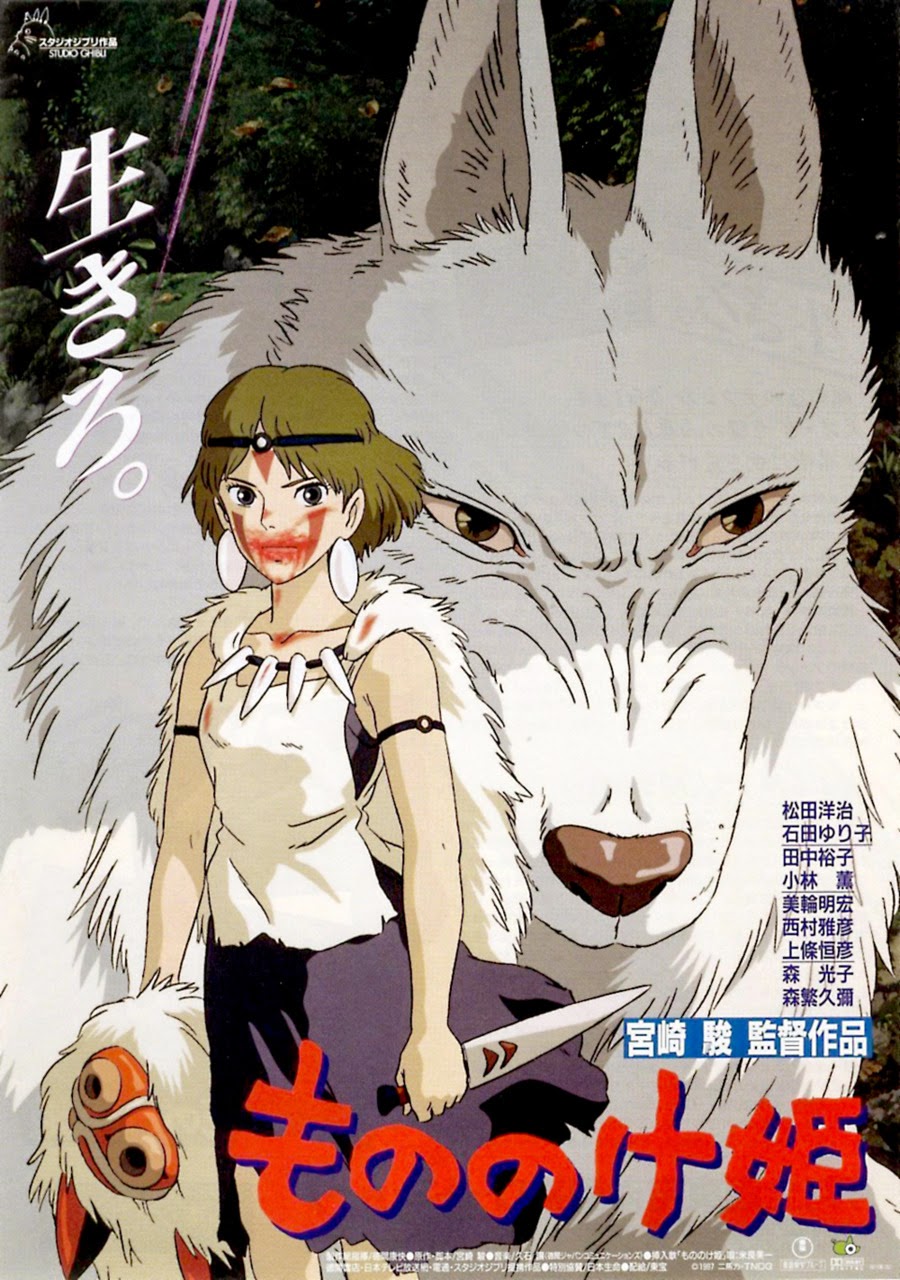December 9th: PRINCESS MONONOKE (Hayao Miyazaki, 1997)
NOTE: This film will be screened in the high-definition Blu-ray format.
In medieval Japan, industrialization and a powerful curse threaten to upend the delicate balance between humans and the gods and animals of the forest.
Animator Hayao Miyazaki sketched elements of Mononoke back in the late 1970s, but did not begin outlining the story and drawing storyboards for another 15 years. Its plot and environmental theme is strikingly similar to his second feature film, Nausicaä of the Valley of the Wind (1984).
Members of the animation staff traveled with Miyazaki to various locations rural Japan for inspiration before production began. An overwhelming majority of the animation was drawn by hand, with computer assistance used sparingly. Miyazaki himself drew more than half of the 140,000+ cels.
While the film is set roughly in a specific time period (roughly between 1300-1500 AD), there is a certain amount of amalgamation that allowed Miyazaki to explore various cultures and races of Japan's history as well as its mythology. Influence was also taken from legendary Hollywood director John Ford, particularly in the way the story's primary frontier town is populated and depicted.
Thematically, the film has a strong environmentalist stance (a common trope for the director), with a focus on the depletion of natural resources as a result of human greed. The characters are far from black and white, with the ostensible "villain" of the story given nuance and rationalizations, and the heroes shown to have their own foibles.
Mononoke was released to a overwhelmingly positive reception, and would become Japan's highest grossing film of all time (for the short period until Titanic hit theaters). It won various festival and critics citations, as well as Best Picture at the "Japanese Academy Awards".
The English language version was adapted by famed comic book writer Neil Gaiman, and disputes over requested edits to the film by Miramax Films head Harvey Weinstein delayed its release for some time. Despite its subpar showing at the American box office, it introduced Miyazaki to many overseas fans, and lead to a deal with Disney for distribution of all Studio Ghibli films.
Running time is 2 hrs, 15 min.
In medieval Japan, industrialization and a powerful curse threaten to upend the delicate balance between humans and the gods and animals of the forest.
Animator Hayao Miyazaki sketched elements of Mononoke back in the late 1970s, but did not begin outlining the story and drawing storyboards for another 15 years. Its plot and environmental theme is strikingly similar to his second feature film, Nausicaä of the Valley of the Wind (1984).
Members of the animation staff traveled with Miyazaki to various locations rural Japan for inspiration before production began. An overwhelming majority of the animation was drawn by hand, with computer assistance used sparingly. Miyazaki himself drew more than half of the 140,000+ cels.
While the film is set roughly in a specific time period (roughly between 1300-1500 AD), there is a certain amount of amalgamation that allowed Miyazaki to explore various cultures and races of Japan's history as well as its mythology. Influence was also taken from legendary Hollywood director John Ford, particularly in the way the story's primary frontier town is populated and depicted.
Thematically, the film has a strong environmentalist stance (a common trope for the director), with a focus on the depletion of natural resources as a result of human greed. The characters are far from black and white, with the ostensible "villain" of the story given nuance and rationalizations, and the heroes shown to have their own foibles.
Mononoke was released to a overwhelmingly positive reception, and would become Japan's highest grossing film of all time (for the short period until Titanic hit theaters). It won various festival and critics citations, as well as Best Picture at the "Japanese Academy Awards".
The English language version was adapted by famed comic book writer Neil Gaiman, and disputes over requested edits to the film by Miramax Films head Harvey Weinstein delayed its release for some time. Despite its subpar showing at the American box office, it introduced Miyazaki to many overseas fans, and lead to a deal with Disney for distribution of all Studio Ghibli films.
Running time is 2 hrs, 15 min.










Comments
Post a Comment